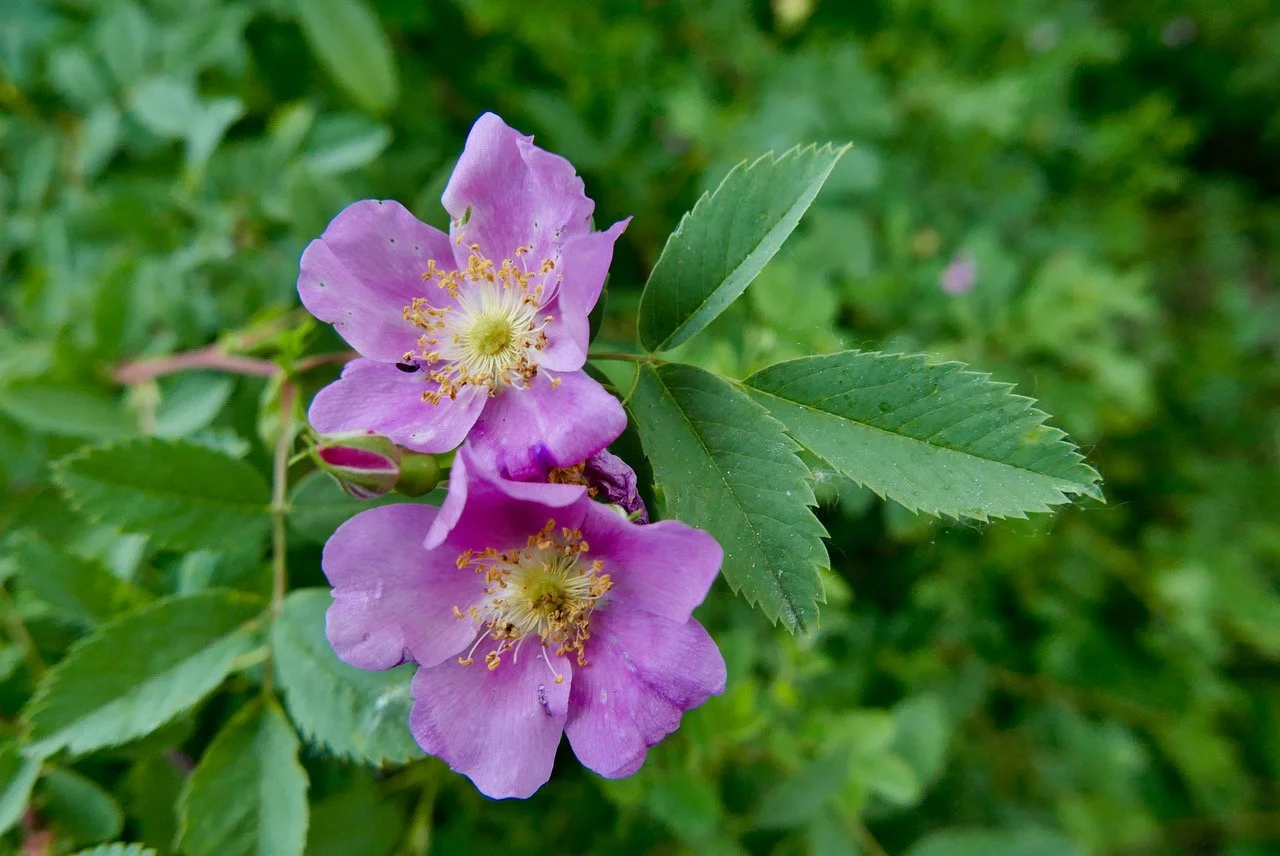A mini meadow is just what it sounds like - a miniature meadow for your yard. They are a small depression designed to capture rainwater that flows off your roof via downspouts and sink it into the ground. In many places in the world, these features are referred to as rain gardens. But here in the Truckee Meadows, we think it’s more appropriate to call them ‘Mini Meadows’ because they mimic the natural meadows and seasonal wetlands that once covered large portions of the Reno/Sparks area.
Read MoreRiver-Friendly Yards seek to protect the Truckee River from afar, both by using water wisely and by reducing pollutants that could flow down the storm drain and into the river. We can achieve both of these goals by using more native plants in our yards.
Native plants are adapted to our local climate and soils. This means that they usually require less water and fertilizers than many common landscaping plants. If you incorporate them into your yard, that can save you money on your water bill and reduce the potential for fertilizers and pesticides washing down the storm drain. They also provide more habitat and food resources for local wildlife and pollinators.
Read MoreNonnative plants take up space and resources that would otherwise go to native plants, breaking down local ecological connections and food webs. Native birds depend on insects to feed their babies, and many native insects cannot sustain life from nonnative plants they haven’t evolved to eat. Because nonnative plants don’t do as good a job feeding native insects, this leads to less food for baby birds and biodiversity loss in urban and suburban areas.
Read MoreSift through the Cal Fire website, and you’ll see at the bottom of the page their offer of a short and to-the-point “2022 Fire Season Outlook.” Doesn’t look very good:
“Extended dryness originating from January is expected to continue into the spring with little precipitation leaving most of the state in moderate to extreme drought conditions prior to summer. These continued dry conditions with above normal temperatures through Spring will leave fuel moisture levels lower than normal, increasing the potential for wildland fire activity.”
If you get to talking with a soil, plant, or farming nerd about their craft there is a solid chance that the terms “soil food web,” “compost tea” or “compost extract” will come up. Though they may sound a bit distasteful, even witchy, they are definitely worth looking into as they provide a great service to plants and soils. Think of them as the ultimate super food for your garden ecosystem.
Read More“Think globally, act locally.” This popular phrase, first coined by Scottish city planner and conservationist Patrick Geddes in 1915, could not be more germane to these times we are living in. Flip on the news and you will undoubtedly learn of the latest environmental catastrophe and its negative impacts: from hurricanes and tornadoes to wildfires and droughts. It can be overwhelming, to say the least, and can leave one feeling hopeless and helpless when it comes to “saving the environment.”
Read MoreHave you heard of the Keep Tahoe Blue Campaign? If you answered, “Yes”, then you probably also know that one of the pollutants that affects Lake Tahoe’s world-renowned clarity is sediments. But sediments don’t just affect Lake Tahoe. They are also a pollutant of concern throughout the entire Truckee River Watershed and affect the Truckee River too!
Read MoreFall is the time of year when a lot of garden pests try to seek shelter for the winter. Unfortunately, they often consider our homes as an ideal over-wintering option. From mice to spiders to box elder bugs, everyone seems to invade when the temperatures start to drop in the Truckee Meadows.
Read MoreWhile winter may seem like a slow time for gardening, there’s still plenty to do to keep your landscape River-Friendly. One thing to consider is deicing salts used on icy paths and driveways. While they help melt ice and make our roads and walking surfaces safer during the winter months, they also can harm our pets and the environment.
Read MoreIt’s late winter. You’ve got cabin fever. It may seem like there’s nothing to do in the garden, and you’re anxiously awaiting the warmer days of spring. Well, you can put some of that restless energy into planning your garden for the next year.
Read MoreThe summer weather is heating up, and we’ve already had several Red Flag Warnings and small brush fires. It’s officially wildfire season in Northern Nevada! Chuck Grimmett/ Flickr Want to breathe easy knowing you and your yard are prepared?
Read MoreLions and tigers and bears - oh my! Although this may be what comes to mind when thinking of creating wildlife habitat, for obvious reasons we don’t want to attract big wildlife like black bears and mountain lions into our yards. But that doesn’t mean we can’t make room for some smaller wildlife, like beneficial insects. There’s plenty of room in your yard to share with these little guys. And, did you know that it’s National Pollinator Week? So for this, the fourth in our River-Friendly Landscaping Series, we’re talking pollinators! Why are pollinators important? Well, firstly because pollinators help feed us! Many of the foods you eat every day are made possible because of the hard work of pollinators - avocados, blueberries, tomatoes, chocolate, and bananas, just to name…
Read MoreWe think the Truckee Meadows is a beautiful place to live! If you do, too, then what better way to show it than to have a landscape that fits in with the regions's natural beauty and shows off your Nevada pride?
Read More












